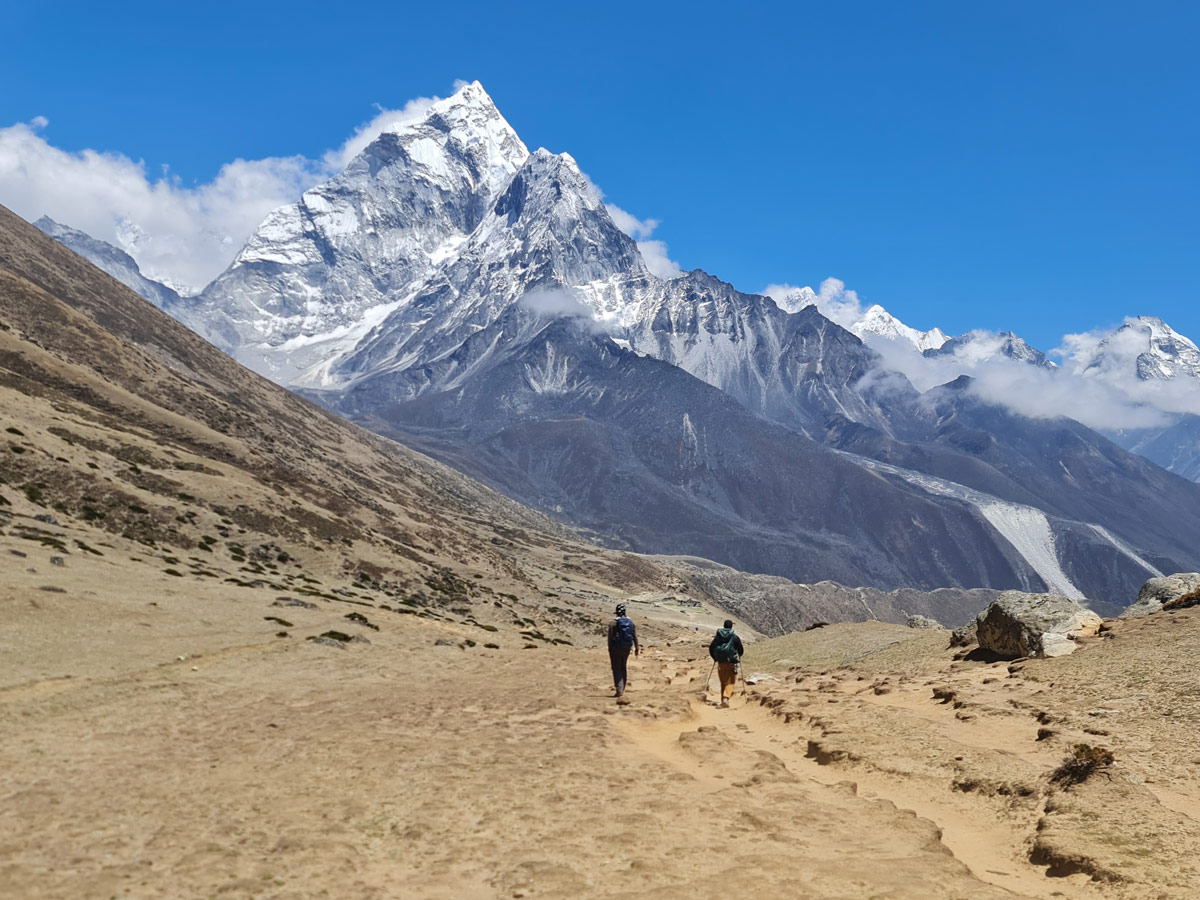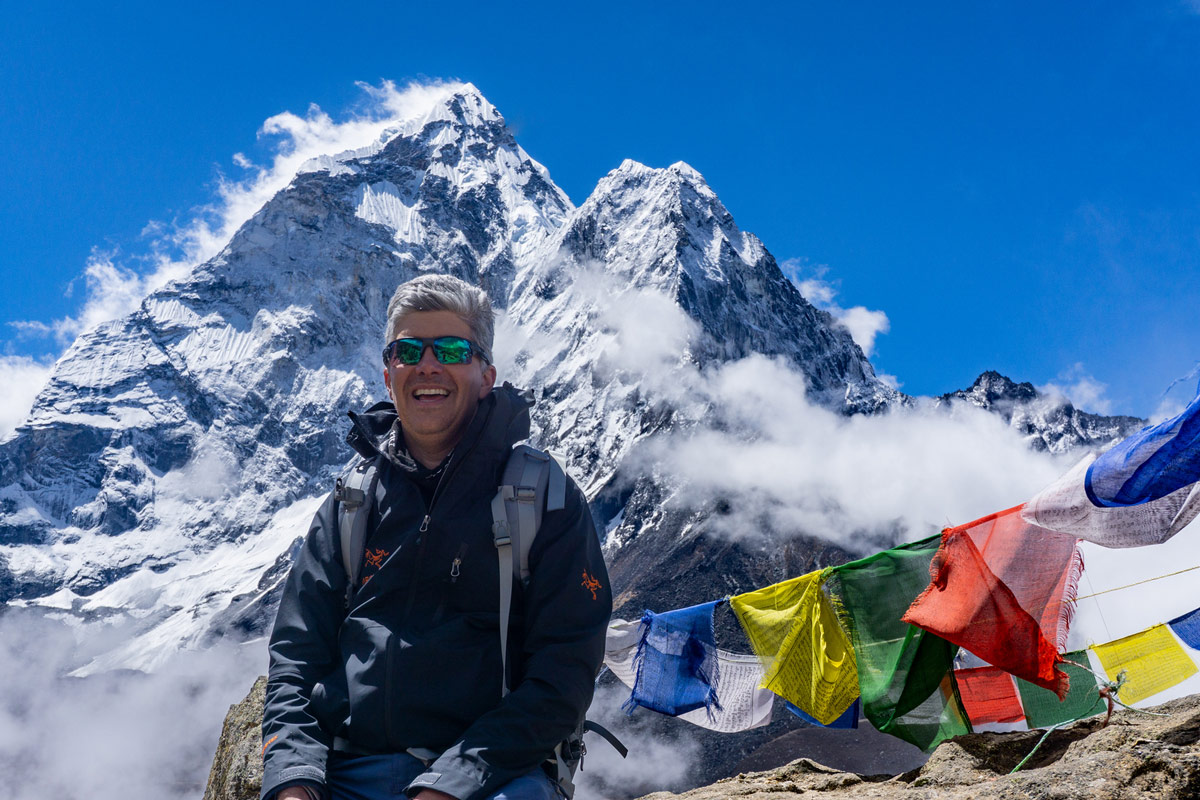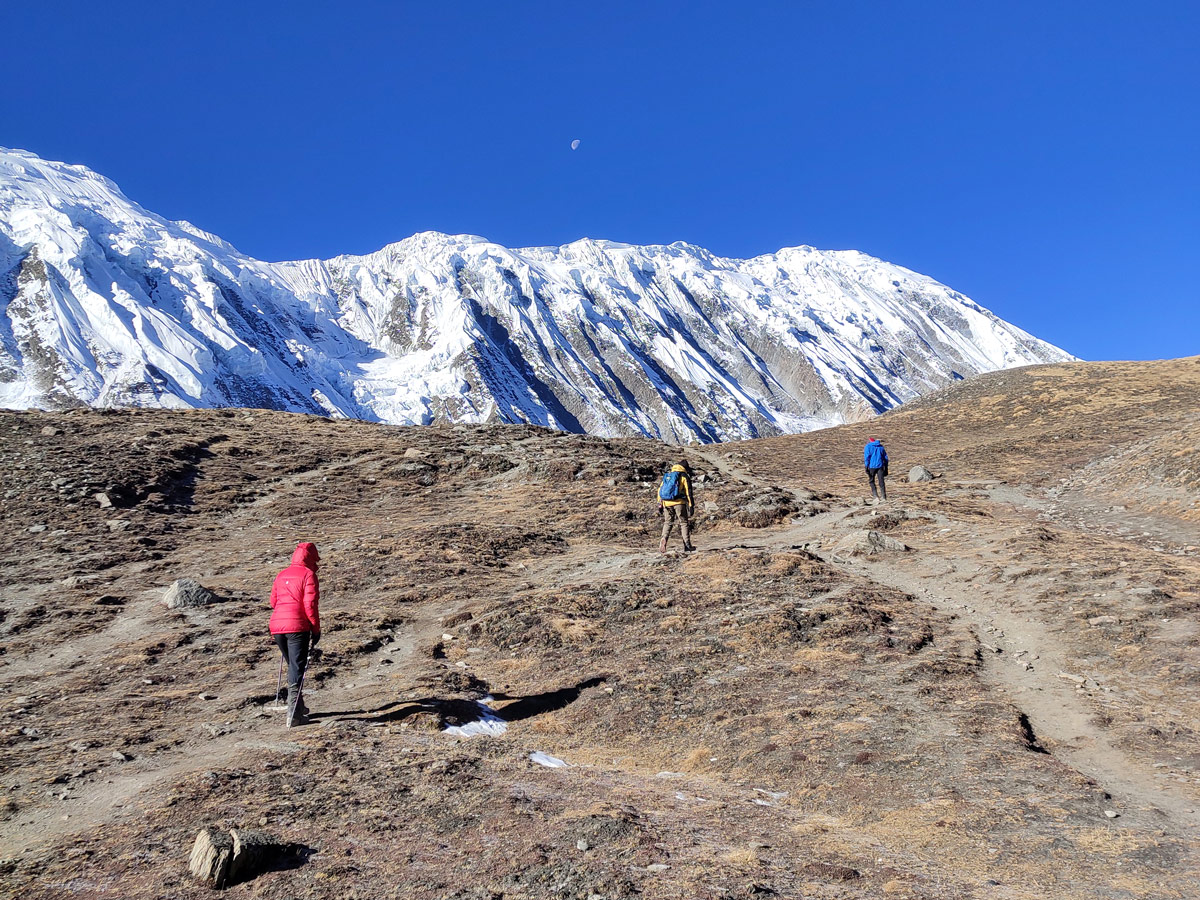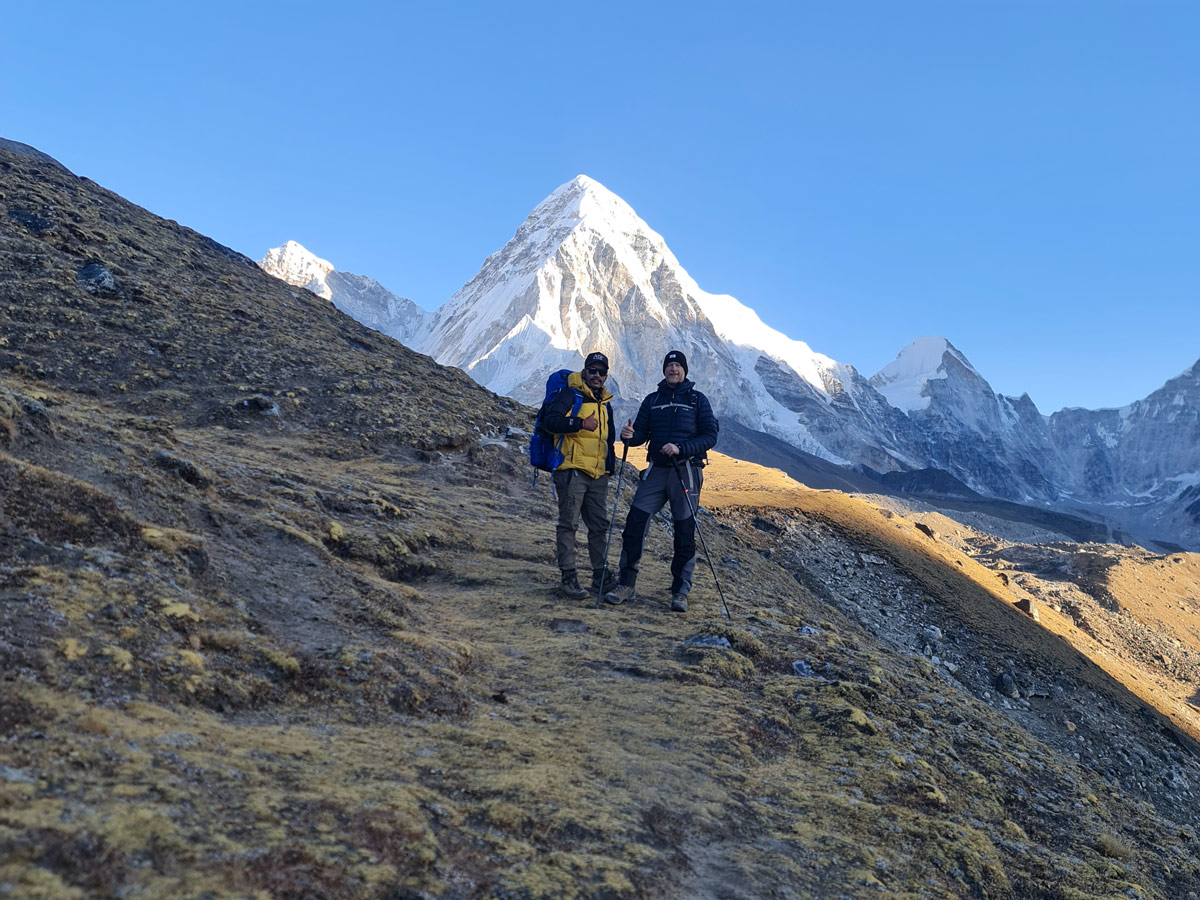The majestic Himalayas of Nepal are known to beckon adventure enthusiasts from all over the world, and the majestic Mt. Everest undoubtedly lies at the heart of this call.
The profound journey to the base of the highest peak in the world is a dream adventure for people- both beginners and experienced trekkers. And the iconic Everest Base Camp Trek allows you to experience just that.

As you set out to walk among towering peaks, experience Sherpa culture, and witness iconic views of Mount Everest, it is important to understand that this journey is not just about showing up with a backpack.
Therefore, in this blog, we have compiled a total of 25 tips to improve your Everest Base Camp trekking experience covering all from pre trek preparation to the actual trekking days, regardless of whether you are a beginner or an experienced trekker.
1. Start Training Early and Consistently
The success of your EBC adventure heavily relies on the amount of preparation you undertake long before your boots hit the trails of Nepal. The EBC trek is undeniable physically demanding.
It involves long hours of walking everyday, steep ascents and descents, and that too with significant elevation gain each day. Therefore, you should start working on your fitness level at least 8 weeks in advance.
You need to prepare your body by including cardio exercises like running, cycling, swimming, and strength training in your workout routine. You should focus on your core and calf muscles to allow you to walk comfortably with a backpack.
2. Understand the Trekking Route & Altitude Profile
One of the easiest ways of having a comfortable trek is by familiarizing yourself with the trekking route and altitude profile of the trek. Research and learn as much as you can about the trek, at least theoretically.
This way, you won’t be caught off guard by any unpleasant surprises. Read about all the major stops on the EBC trek, acclimatization stops, as well as the major viewpoints during the EBC trek.
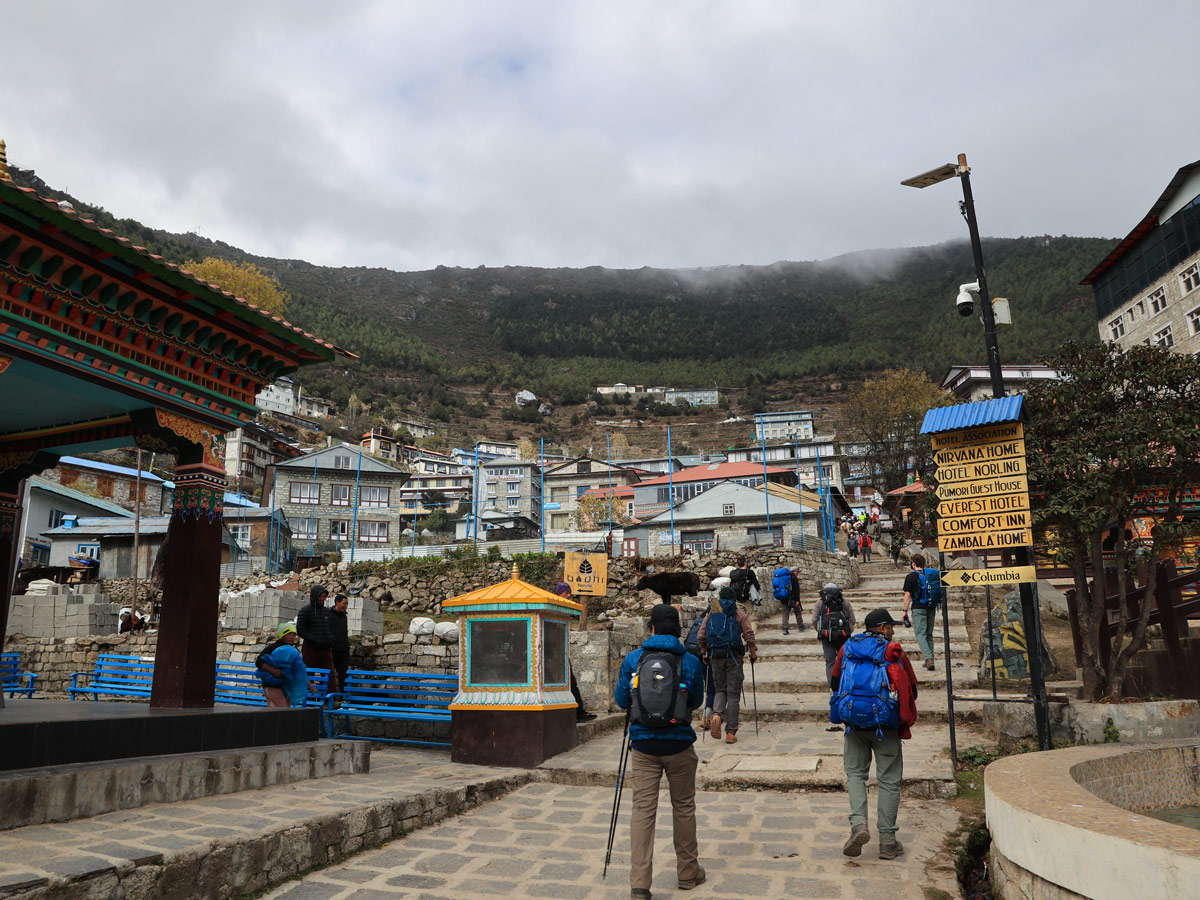
From Lukla to Everest Base Camp, including Namche Bazaar, Tengboche, Dingboche, Lobuche and Gorakshep, know what to expect at each location. Know where the acclimatization days fall and how the altitude gains each day.
3. Consider Nearby Hikes (If Possible)
The best way to prepare yourself for the EBC trek is by going on hikes near your place. Think of this as a trial run. While it might not even be remotely close to the actual trekking conditions, it will give you an idea of what to expect.
If you live near or have access to areas with slight altitude difference, like a jungle up the hill, even a short overnight trip to a moderate elevation can give your body a taste of thinner air and help you understand how you react to altitude.
Even if you don’t have access to hikes with altitude difference, go for basic hikes with a loaded backpack. This experience can stimulate trekking conditions and help you fine-tune your preparation and make required changes in your fitness regime.
4. Get Travel Insurance That Covers High Altitude
While you are going for a trip full of adventure, it is also important to be prepared for any unforeseen circumstances. Therefore, it is important to get a comprehensive travel insurance meant especially for trekking.
Not all insurance covers trekking above 5,000 m. Make sure you pick an insurance plan that includes a helicopter evacuation, altitude illness, luggage insurance, and trip cancellations. Always carry a printed and digital copy of your policy.
5. Pick a Trusted Local Trekking Agency
If you are considering embarking on the EBC trek, you must be aware that solo trekking is banned in Nepal. That leaves you with no choice but to hire a guide. And it is better for you in terms of safety as well as comfort.
You should hire a trusted local trekking agency like Ace the Himalaya that ensures your permits, accommodation, guide, porter services, and itinerary are taken care of.
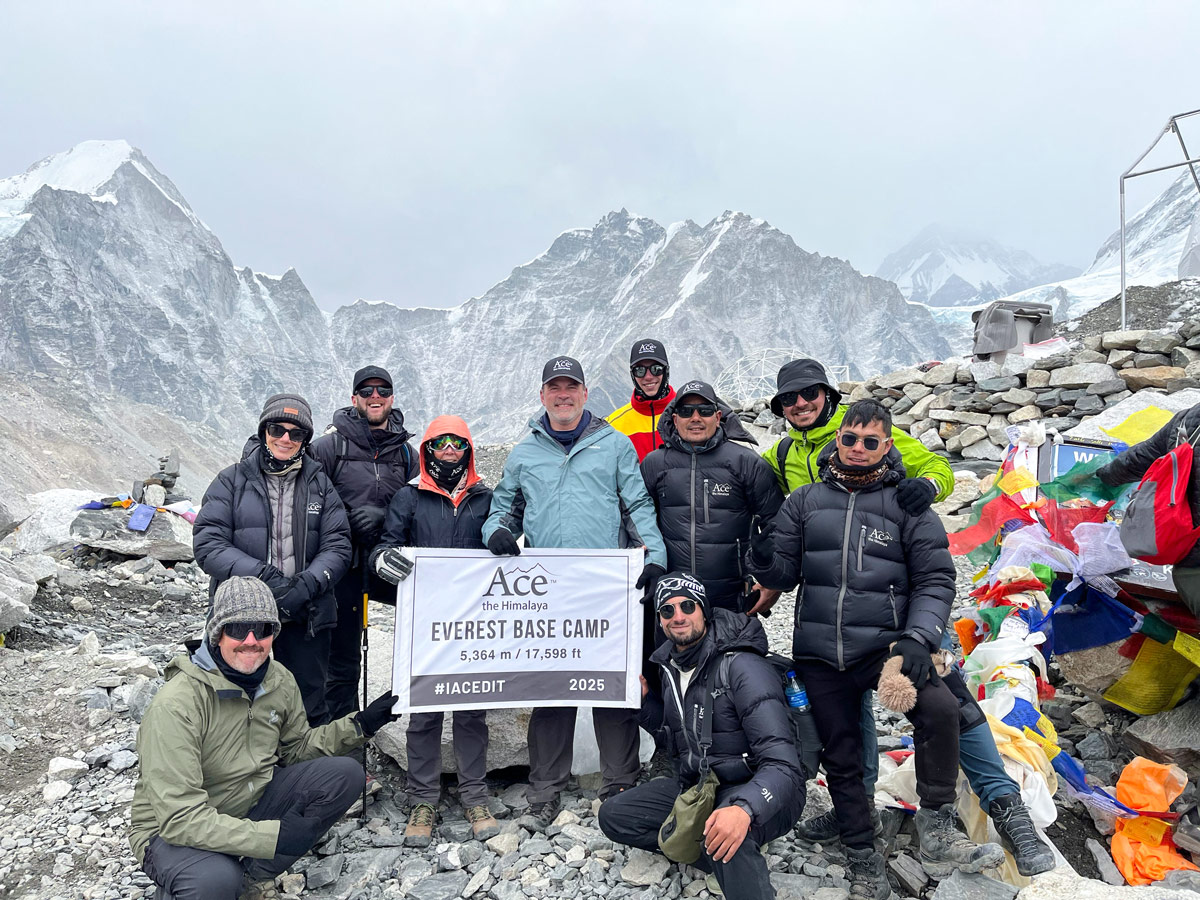
The guides provided by us are also licensed and first aid trained, meaning you will have good support for any medical emergency. Having local expertise also offers cultural insights and safety in case of other emergencies.
6. Trek with a Flexible Itinerary
While having a standard trekking itinerary for EBC trek is crucial and makes the trek much easier to navigate, you should always trek with a flexible itinerary that allows you some last-minute changes.
You never know what will happen during the trek and you might need to delay or cancel certain plans. Therefore, you should leave room for buffer days in your EBC trek itinerary.
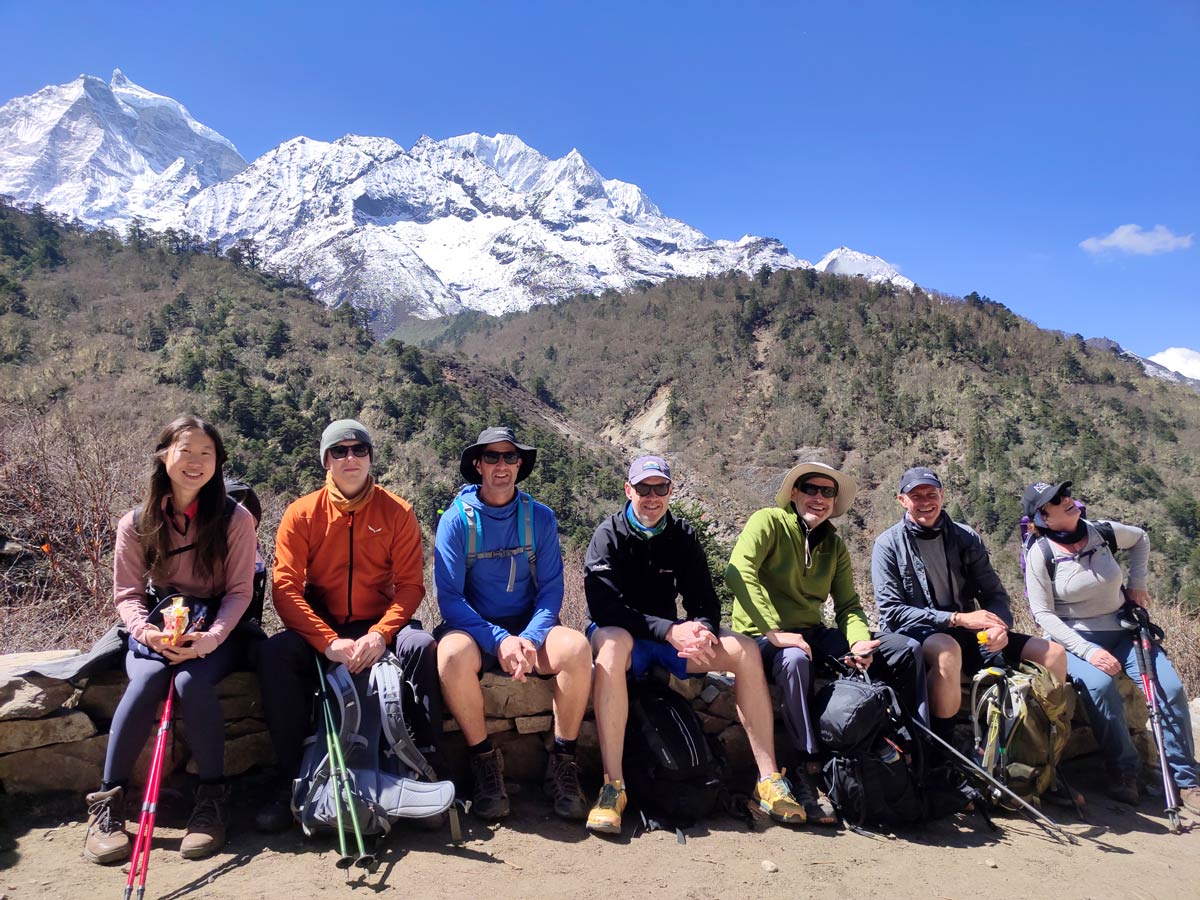
One of the most common delays that you might face during the trek is often the delay or even cancellation of flights at Lukla airport due to unpredictable weather changes. If you don’t add at least 2 buffer days, you might end up missing your flight back home!
7. Plan Your Budget Wisely
When you choose a trekking company, a certain budget will be automatically set for the main trek including permits, accommodation, and more. However, you still need to plan your budget for additional expenses.
Besides the trek cost, budget for gear rental/purchase, meals, hot showers, snacks, charging fees, tips, and internet need to be separated. Carry enough Nepali cash (preferably small denominations) before leaving Kathmandu.
Also, sometimes the flights from Lukla might not operate due to weather conditions. At that time, you might require emergency fund for a helicopter. Keep that in mind so that you are not caught off guard during the trek.
8. Understand the Reality of the Trek
While the EBC trek is indeed a trek full of bucket list adventures, it is not a walk in the park. You will come across your fair share of challenges, which can at times really get to you mentally and leave you drained.
Thus, you need to do thorough research beyond just the pretty pictures of the trek. Acknowledge that you’ll be dealing with high altitude, cold temperatures (especially at night), basic accommodation in tea houses, and limited amenities, especially after you cross Namche Bazaar.
Knowing these things and coming to terms with these expectations beforehand prevents shock and disappointment during the trek which allows you to embrace the authentic experience.
9. Practice Mindfulness
Even when you are aware of the challenges, you can still have difficulty dealing with them. Therefore, you should cultivate mental fortitude and resilience while reminding yourself of the reward that awaits you.
When faced with a challenging day, focus on the present moment, on one step at a time. This can be achieved by practicing mindfulness and meditation. Remind yourself that the trek is as much about the journey as it is about the destination.
10. Invest in Proper Quality Footwear
The importance of good footwear during Everest Base Camp trek cannot be stressed enough. This is the one thing that can single handedly make or break your entire trekking experience.
Your feet are your most important asset on the trek. Make sure you purchase waterproof, well-insulated, ankle supporting, and comfortable hiking boots several months in advance.
More importantly, remember that new boots on any trek is a sure shot recipe for misery as it leaves you with blisters. So, wear your boots extensively on training hikes to break them in properly.
For trekking gear shopping, Thamel is your best go to place as you will get many options here. You can even rent gear from shops in Thamel. Our guides can always help you during shopping.
11. Master the Art of Layering
Now that the feet are covered, let’s move to your body. The weather in the Himalayas is extremely unpredictable. So, you might be left burning in the sun or freezing in snow at any time of the day.
This makes layering extremely important so that you can adjust your clothes according to the demand of the weather. Pack a well-balanced system of different layers.
Add moisture-wicking base layers (merino wool or synthetic), insulating mid-layers (fleece, lightweight down jacket), and a waterproof/windproof outer shell. This allows you to add or shed layers quickly to adapt to fluctuating temperatures.
12. Don’t Underestimate a Good Sleeping Bag
Yes, the Everest Base Camp trek features a range of comfortable teahouses that provide warm blankets. However, they might not suffice you, especially at high altitudes with usually freezing temperatures.
This is where your good quality four season sleeping bag rated for up to –10 to even up to –20 degrees comes in handy. If you don’t want to purchase it, you can easily rent these sleeping bags.
At Ace the Himalaya, we provide rental options for the trekkers, and you can easily rent good sleeping bag and down jackets while you go for the trek.
13. Pack Essential Technical Gear
While the technical trekking gear might seem insignificant from afar, it is very important and provides ample support during the trek. This includes trekking poles, headlamp with spare batteries, snacks, sun protection, a fleece jacket, camera, and good quality sunglasses.
14. Don’t Forget the Toiletries
Carrying personal toiletries and hygiene essentials is a must during the EBC trek as buying everything on the trek can be harsh on your pockets. So make sure to stock everything in Kathmandu.
Include items like hand sanitizer, wet wipes (as water is limited for washing), toilet paper, quick-dry towel, sunblock, lip balm with SPF, sanitary pads, tampons, and any personal hygiene items that you might need.
15. Keep Power Banks and Solar Chargers
While electricity is available in the lower parts of the Everest Base Camp trek, as you cross Namche Bazaar, electricity starts getting scarce and thus expensive on the trek.
But you will always have access to sunlight. Therefore, it is best if you add solar operated chargers and power banks in your packing list for EBC trek that can keep your devices running throughout the trek.
16. Bring Water Purification Tablets
Buying bottled water while on the trek can lead to a lot of plastic waste. And the Everest region is already struggling with waste management as it is. Therefore, it is best to carry a reusable water bottle.

Bring a reusable bottle or hydration bladder along with purification tablets or filters so that you can purify water from natural resources and drink. It is an eco friendly and budget conscious alternative.
While trekking with Ace the Himalaya, you don’t have to worry as we provide filtered drinking water to out trekkers using portable water filters or water purification tablets.
17. Keep Your Daypack Light and Essentials Handy
You will have a lot of things to carry while on the trek. However, most of it will be carried by a porter and you will be carrying your daypack. Now, the weight of your daypack can drag you down on the trails if it is heavy.
Make sure to carry only your essentials in the daypack and keep it light. Carry a 25–30L backpack with essentials like water, snacks, sun protection, a fleece jacket, camera, toilet paper, a headlamp, cash, permits, and other documents.
18. Acclimatize Properly
The golden rule that you can’t compromise with during the EBC trek is the ‘climb high, sleep low’ rule. This is extremely important for acclimatization and helps you prevent altitude sickness.
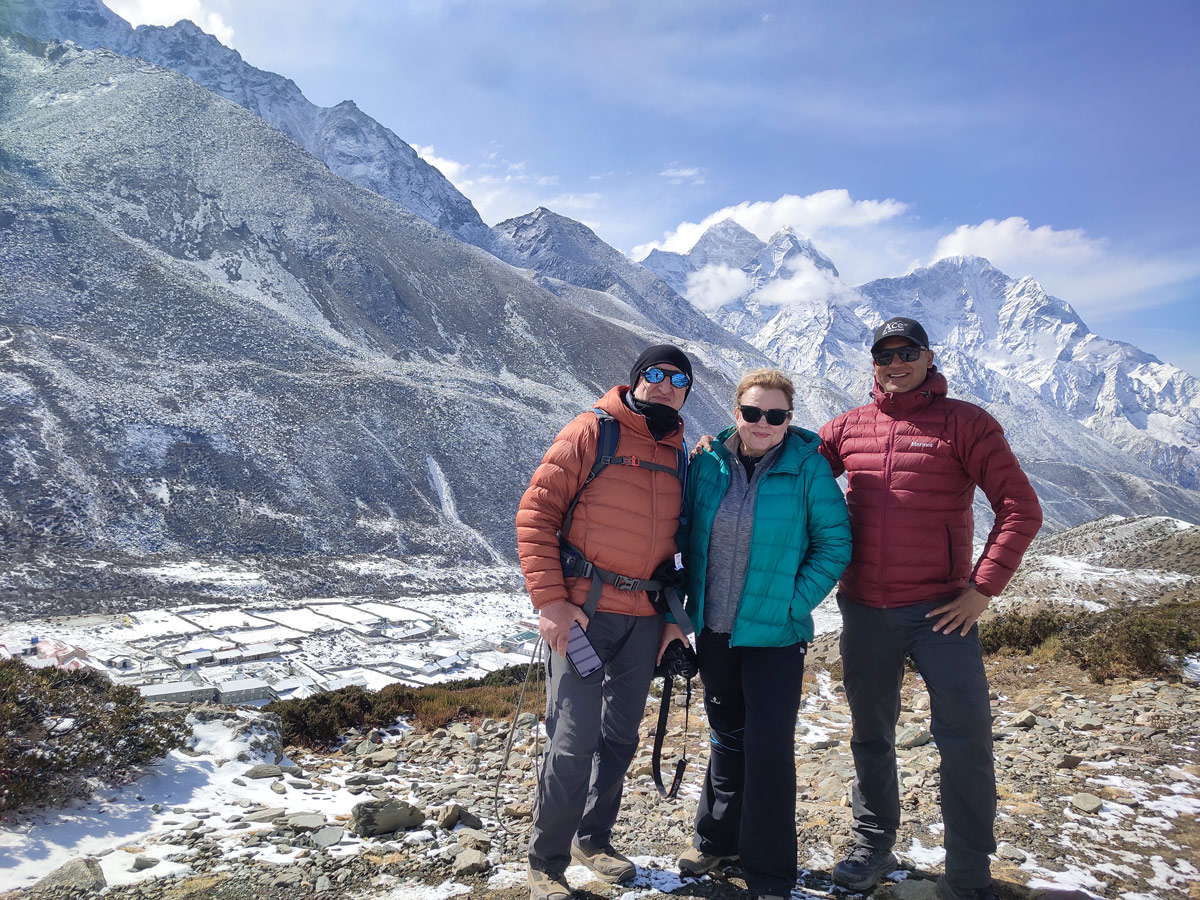
Add dedicated acclimatization days in your itinerary. Spend two nights in Namche Bazaar and another one in Dingboche as part of acclimatization. You can go for short acclimatization hikes in and around Namche Bazaar.
During these hikes, you will go to a higher altitude, and by the end of the day you will be back in your teahouse at lower altitude. This allows your body to adjust.
19. Keep Your Pace Slow and Steady
While it might seem like you can easily cover 9 to 10 kms per day, it is not just about the distance during the trek. Along with the distance, you will also gaining significant altitude. Therefore, it is important to maintain a slow and steady pace.
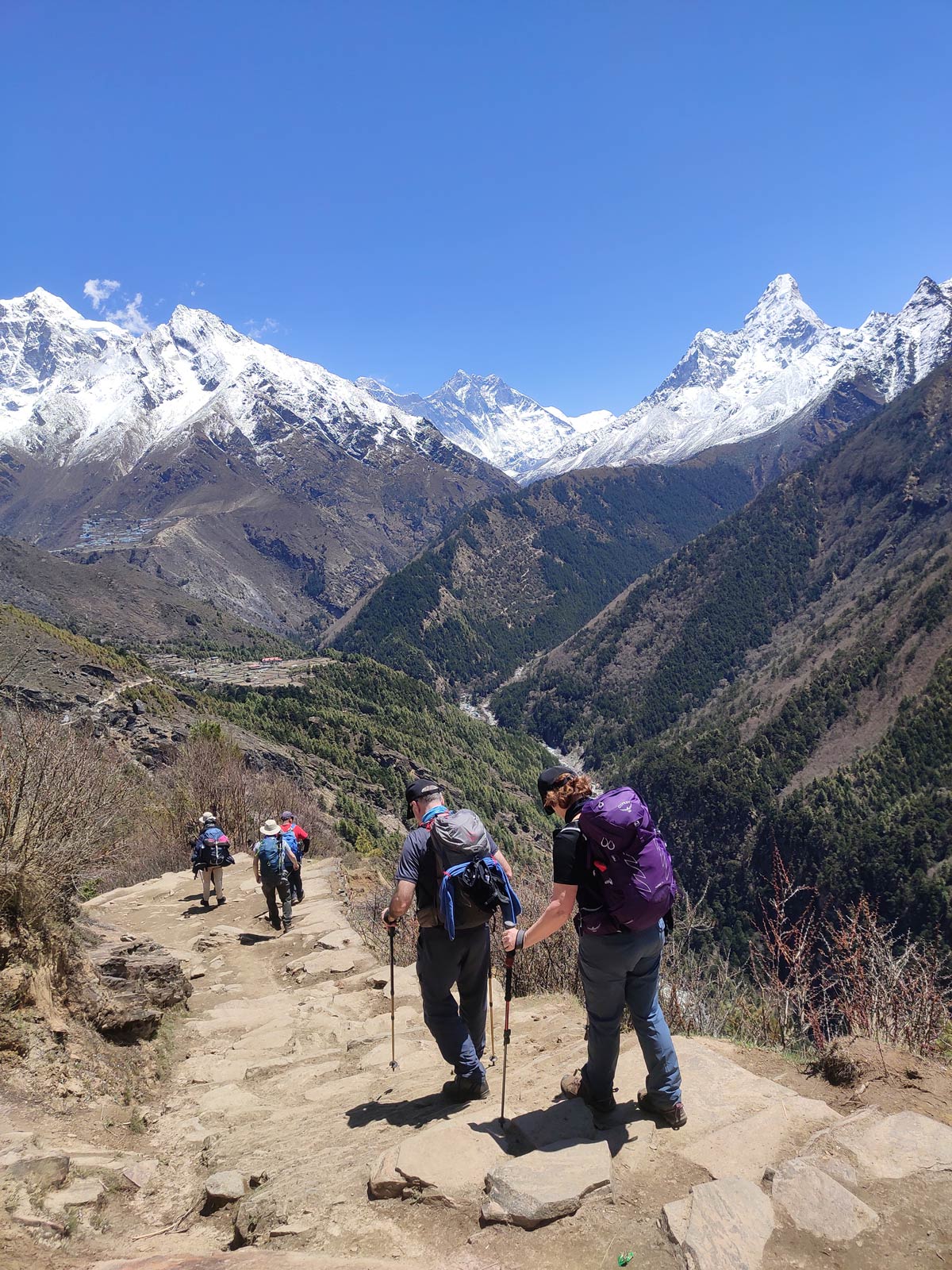
Even if you feel strong and fine, resist the urge to rush as altitude is a great equalizer. Do not compare yourself to other trekkers and don’t get in any kind of competition.
20. Hydrate
Hydration is the key to be healthy during the trek. Dehydration can exacerbate altitude sickness and can quickly leave you dragging your feet or even losing your consciousness on the trek.
Drink at least 3 to 4 liters of water everyday. And strictly avoid drinking caffeinated drinks and alcoholic beverages as it can speed up the dehydration process.
21. Carry a Well Stocked First Aid Kit
When you are on the trail, no amount of cautiousness and preparation is ever enough. Although you are planning for a good time ahead, make sure to be prepared for any other situations too.
Carry a well stocked first aid kit with basic medicines like ibuprofen, analgesics, antipyretics, ointments, bandages, pain relieving sprays, and any other personal medications that you might be on.
You can also add prescribed medicines for altitude sickness while you’re at it. Ace the Himalaya ensures your safety by providing a comprehensive medical first aid kit during the trek.
22. Choose Hygienic Teahouses and Eat a Balanced Diet
The fuel that is needed during the daytime where you have to walk for long hours comes from proper rest and proper food. Therefore, you need to select a hygienic teahouse where you can have proper nutritious food during EBC trek.
Dal Bhat (rice, lentils, and vegetables), the local staple, is nutritious and refilled for free in most teahouses. Avoid meat above Namche as freshness can’t be guaranteed. Garlic soup is often recommended to aid acclimatization.
23. Practice Leave No Trace
As mentioned above, the Everest region is already struggling with issues related to waste management. Therefore, it is strongly advised to stick to ‘Leave no trace’ principle while on the EBC trek and follow sustainable trekking.
Carry your own trash until you find proper disposal. Reuse water bottles and avoid buying plastic. Do not carry plastic into the trek as far as possible. Stick to biodegradable items instead.
24. Respect Local Culture and Customs
When on the EBC trek, you are entering the territory of the warm and loving Sherpa people who will be extremely hospitable towards you. Therefore, it is expected that you stay respectful towards their culture and customs too.
Be mindful not to take photos of people and within certain places like monasteries without prior permission. If you are participating in any local customs, make sure to learn the right way to do it.
25. Listen to Your Body
Last but very important, always listen to your body and be extremely vigilant of any signs or symptoms that your body might show. While on other days these signs might be normal, during the trek it might be a sign of altitude sickness.
Watch out for any signs of altitude sickness like headaches, nausea, dizziness, fatigue, loss of appetite, and difficulty sleeping. Do not ignore these symptoms. If you notice them, tell your guard immediately and descend to a lower altitude.
Keeping your safety in mind, Ace the Himalaya tracks the oxygen level, pulse, and AMS symptoms of each trekker each day.
